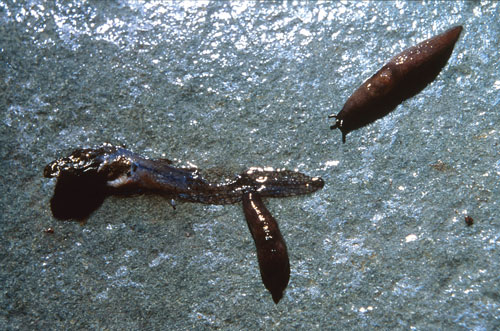© Marlene A. Condon

Spring is on the way, which means folks will be thinking about gardening. According to the National Gardening Association, 90 million households in the United States maintain a yard and garden.
This statistic somewhat surprises me because most people’s idea of gardening is one that involves a constant war with Mother Nature. Pick up any gardening magazine or book (except mine!), watch any gardening show on television or listen to any radio program about gardening, and you will undoubtedly read or hear about “pests.”
This word even appears in scientific papers, meaning that scientists also believe that some organisms exist solely to wreak havoc upon the natural world. But nothing could be further from the truth. In reality, the natural world is all about the perpetuation of life in a world of limited physical space and resources.
The reason people generally don’t recognize this truism is because they tend to look at the world only from their own narrow perspective, rather than in a truly objective manner that reveals the genuine principles of nature.
For example, a few years ago when I had finished giving a slide presentation, an acquaintance in the audience asked why she was having trouble with slugs in her lettuce bed. I had explained in my talk that the preferred food of slugs is rotting plant or animal matter, so I asked her if she had perhaps removed most of the organic material from her yard.
People often do this because they feel they need to “clean up.” But when folks remove plant debris, the slugs have nothing left to feed upon other than the gardener’s healthy plants. However, the woman assured me that she had plenty of organic matter for them to eat.
It can be difficult to figure out why someone is experiencing garden problems without seeing the garden for yourself. Fortunately, I was able to see the lettuce patch in person when I was invited to this lady’s home. I immediately saw why the slugs were there: the lettuce plants had been planted too close together.
From above, the lettuce plants looked crisp and green and gave the impression that all was well, but it actually wasn’t. Because the plants were so crowded, there was no way for air to get underneath them after a rain or a watering so evaporation could occur. Thus the soil and the leaves at the bottom of the plants remained constantly drenched.
As a result, the leaves closest to the ground had begun to rot, attracting slugs whose “job” is to recycle decaying matter back into the environment. In other words, the slugs were not there to feed on the leaves that were doing fine at the top of the plants, but rather to feed upon and get rid of the leaves that were not doing well at the bottom of the plants.
Their actions would help the lettuce plants by giving them a chance to thrive, which they would not otherwise be able to do. In their state of over-crowdedness, the plants were doomed to ultimately end up sickly because their roots would start dying.
As long as the soil remained wet underneath the lettuce plants, the pores (spaces) within the soil structure would be filled with water instead of air. This situation would make it difficult for the roots to get oxygen, which they need for the chemical processes to occur that provide energy for them to grow.
Because the natural world is about perpetuating life, Mother Nature sends in organisms to try to correct problems. In this case, microorganisms had moved in to rot the lower wet leaves so slugs would come to eat them. When the slugs removed the rotting leaves, they would open up space for air to begin circulating around the plants. The air would dry not only the leaves, but also the soil—which is critically important to the well being of most plants.
Thus the slugs were there to try to save, not hurt, the plants! Yet horticulturists refer to slugs as “pests” and advise gardeners to kill them on sight as if they are “bad” animals. Go to any extension web site in the country and you will find this advice, the result of people not possessing a true understanding of how our natural world actually works.
This is a sad situation for numerous reasons, some of which are that:
People are killing innocent animals that are only trying to do their jobs;
People usually kill these innocuous creatures with chemicals that are poisonous or otherwise harmful to humans and other organisms;
When people kill animals, they usually impact numerous other kinds of critters that are dependent upon those animals for food; and
Wildlife provides services that keep the environment functioning properly, so the unnecessary killing of particular animals (such as slugs) negatively impacts the environment.
The reality is that garden “pests” don’t exist, but poor horticultural practices (i.e., those that conflict with the laws of the natural world) do. To be a happy, successful gardener, you must learn to live in agreement with nature. In other words, you and your garden need to be nature-friendly.











